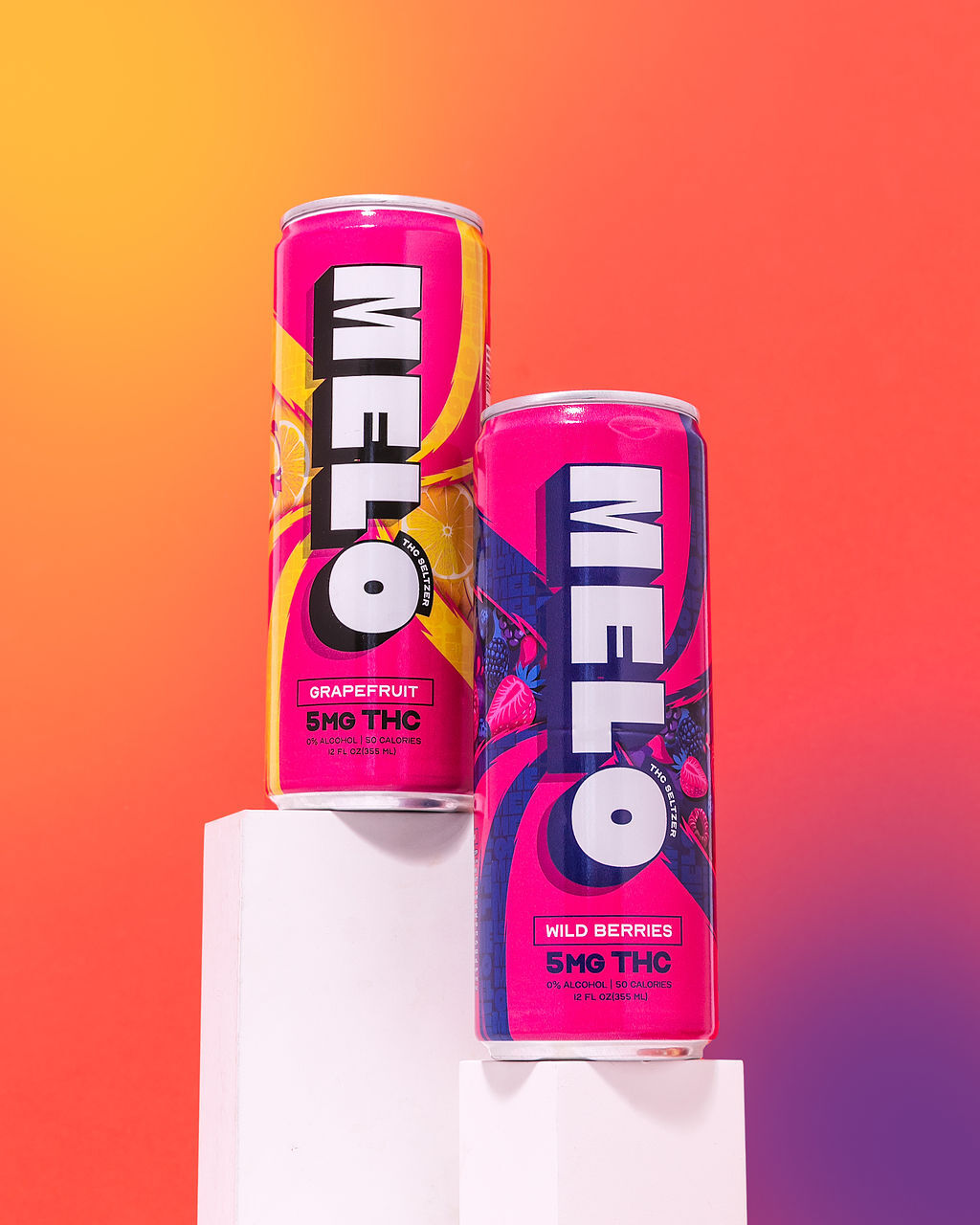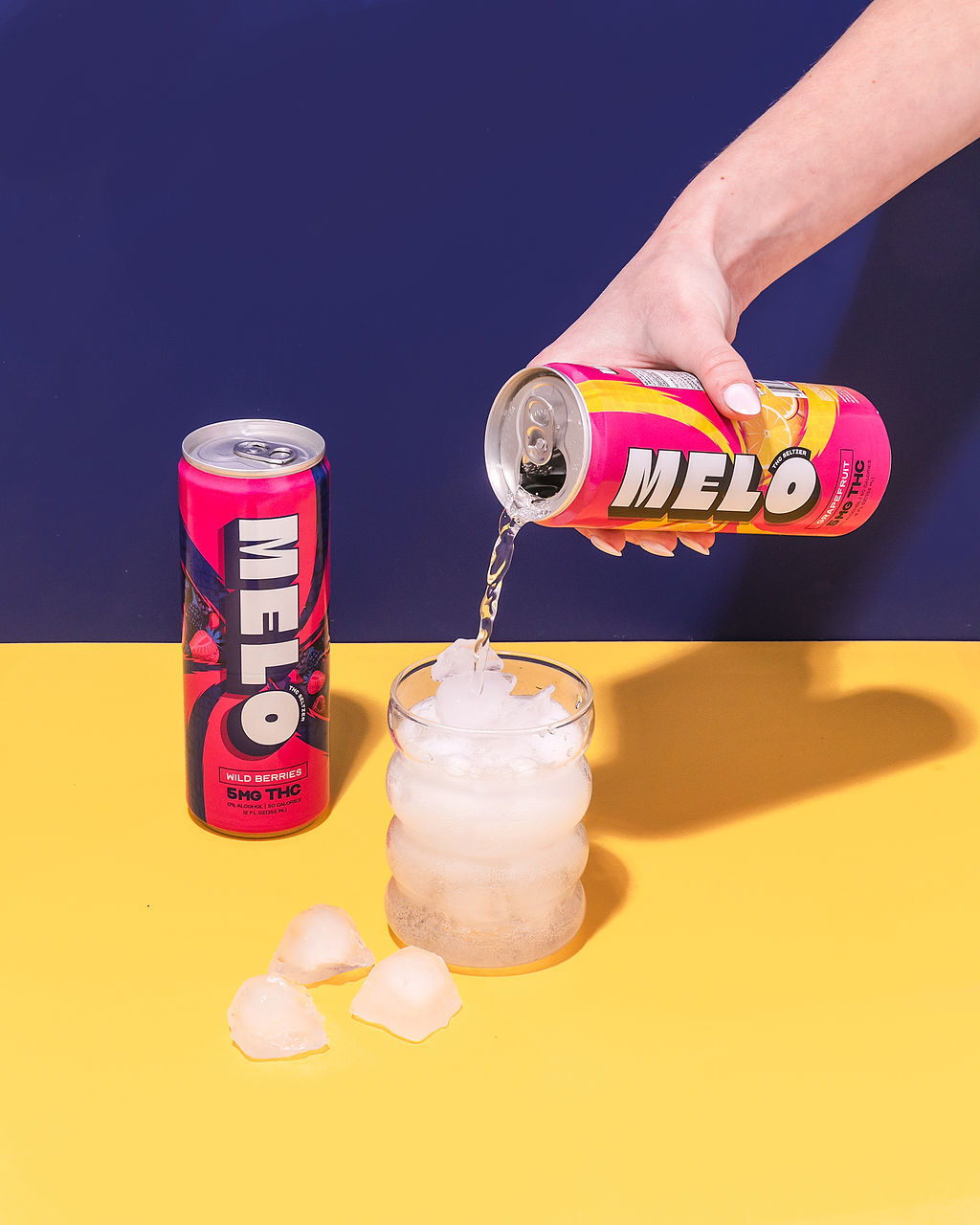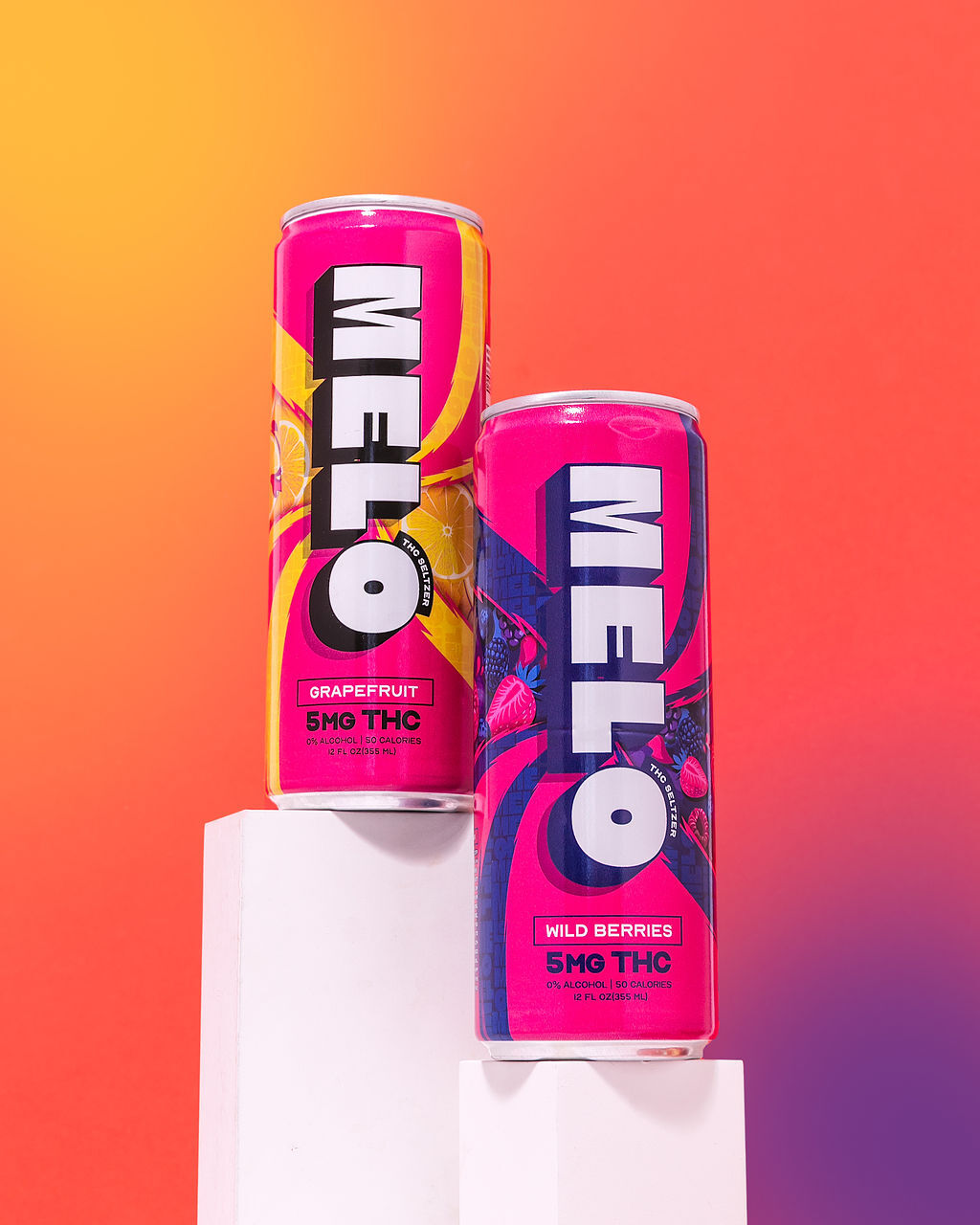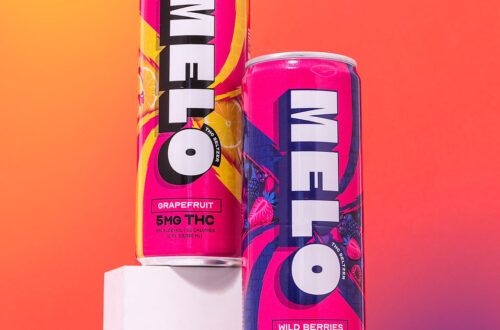THC Drinks: A Novel Approach to Pain Management
Cannabis-infused beverages, featuring THC as their active ingredient, are emerging as a novel and increasingly popular approach to pain management. Offering an alternative to traditional methods, THC drinks provide a discreet and convenient way to access the therapeutic benefits of cannabis for various types of pain.
Potential Mechanisms of Action
The potential pain-relieving effects of THC drinks stem from its interaction with the body’s endocannabinoid system (ECS). This complex network of receptors and neurotransmitters plays a crucial role in regulating pain perception, inflammation, and other physiological processes. THC binds to cannabinoid receptors, primarily CB1 receptors located in the central nervous system, influencing neurotransmitter release and modulating pain signals transmitted to the brain.
Furthermore, THC exhibits anti-inflammatory properties by inhibiting the production of inflammatory cytokines, molecules that contribute to pain and tissue damage. This reduction in inflammation can help alleviate both acute and chronic pain conditions. Additionally, THC may have analgesic effects through its interaction with opioid receptors, potentially contributing to pain relief.
Pharmacokinetic Differences Compared to Smoking or Edibles
Cannabis-infused beverages, featuring THC as their active ingredient, are emerging as a novel and increasingly popular approach to pain management. Offering an alternative to traditional methods, THC drinks provide a discreet and convenient way to access the therapeutic benefits of cannabis for various types of pain.
The potential pain-relieving effects of THC drinks stem from its interaction with the body’s endocannabinoid system (ECS). This complex network of receptors and neurotransmitters plays a crucial role in regulating pain perception, inflammation, and other physiological processes. THC binds to cannabinoid receptors, primarily CB1 receptors located in the central nervous system, influencing neurotransmitter release and modulating pain signals transmitted to the brain.
Furthermore, THC exhibits anti-inflammatory properties by inhibiting the production of inflammatory cytokines, molecules that contribute to pain and tissue damage. This reduction in inflammation can help alleviate both acute and chronic pain conditions. Additionally, THC may have analgesic effects through its interaction with opioid receptors, potentially contributing to pain relief.
However, compared to smoking or edibles, THC drinks demonstrate unique pharmacokinetic differences:
- Onset of Action:THC in beverages generally takes longer to take effect (30 minutes to an hour) compared to smoking (almost immediate) or edibles (30 minutes to several hours).
- Duration of Effects: The effects of THC drinks often last for a more moderate duration than smoking, but shorter than edibles.
- Bioavailability: The absorption rate of THC from drinks can vary depending on factors like food intake and individual metabolism.
Available Products and Their Potencies
Cannabis-infused beverages, featuring THC as their active ingredient, are emerging as a novel and increasingly popular approach to pain management. Offering an alternative to traditional methods, THC drinks provide a discreet and convenient way to access the therapeutic benefits of cannabis for various types of pain.
The potential pain-relieving effects of THC drinks stem from its interaction with the body’s endocannabinoid system (ECS). This complex network of receptors and neurotransmitters plays a crucial role in regulating pain perception, inflammation, and other physiological processes. THC binds to cannabinoid receptors, primarily CB1 receptors located in the central nervous system, influencing neurotransmitter release and modulating pain signals transmitted to the brain.
Furthermore, THC exhibits anti-inflammatory properties by inhibiting the production of inflammatory cytokines, molecules that contribute to pain and tissue damage. This reduction in inflammation can help alleviate both acute and chronic pain conditions. Additionally, THC may have analgesic effects through its interaction with opioid receptors, potentially contributing to pain relief.
However, compared to smoking or edibles, THC drinks demonstrate unique pharmacokinetic differences:
- Onset of Action:THC in beverages generally takes longer to take effect (30 minutes to an hour) compared to smoking (almost immediate) or edibles (30 minutes to several hours).
- Duration of Effects: The effects of THC drinks often last for a more moderate duration than smoking, but shorter than edibles.
- Bioavailability: The absorption rate of THC from drinks can vary depending on factors like food intake and individual metabolism.
Available THC drink products vary widely in potency and formulation. Some common examples include:
- CBD-THC blends: These drinks often combine the pain-relieving effects of THC with the potential calming and anxiety-reducing properties of CBD.
- Single-serving beverages: These come in cans or bottles with standardized doses of THC, making it easier to manage intake.
- High-THC options: For individuals seeking stronger pain relief, some drinks offer higher concentrations of THC per serving.
It’s important to note that the legal status and regulations surrounding THC drinks vary significantly depending on location. Consumers should always check local laws and guidelines before purchasing or consuming these products. Moreover, responsible use involves starting with low doses and gradually increasing as needed to assess individual tolerance and avoid potential adverse effects.
Dosage and Administration Guidelines
Cannabis-infused beverages, featuring THC as their active ingredient, are emerging as a novel and increasingly popular approach to pain management. Offering an alternative to traditional methods, THC drinks provide a discreet and convenient way to access the therapeutic benefits of cannabis for various types of pain.
The potential pain-relieving effects of THC drinks stem from its interaction with the body’s endocannabinoid system (ECS). This complex network of receptors and neurotransmitters plays a crucial role in regulating pain perception, inflammation, and other physiological processes. THC binds to cannabinoid receptors, primarily CB1 receptors located in the central nervous system, influencing neurotransmitter release and modulating pain signals transmitted to the brain.
Furthermore, THC exhibits anti-inflammatory properties by inhibiting the production of inflammatory cytokines, molecules that contribute to pain and tissue damage. This reduction in inflammation can help alleviate both acute and chronic pain conditions. Additionally, THC may have analgesic effects through its interaction with opioid receptors, potentially contributing to pain relief.
However, compared to smoking or edibles, THC drinks demonstrate unique pharmacokinetic differences:
- Onset of Action:THC in beverages generally takes longer to take effect (30 minutes to an hour) compared to smoking (almost immediate) or edibles (30 minutes to several hours).
- Duration of Effects: The effects of THC drinks often last for a more moderate duration than smoking, but shorter than edibles.
- Bioavailability: The absorption rate of THC from drinks can vary depending on factors like food intake and individual metabolism.
Available THC drink products vary widely in potency and formulation. Some common examples include:
- CBD-THC blends: These drinks often combine the pain-relieving effects of THC with the potential calming and anxiety-reducing properties of CBD.
- Single-serving beverages: These come in cans or bottles with standardized doses of THC, making it easier to manage intake.
- High-THC options: For individuals seeking stronger pain relief, some drinks offer higher concentrations of THC per serving.
It’s important to note that the legal status and regulations surrounding THC drinks vary significantly depending on location. Consumers should always check local laws and guidelines before purchasing or consuming these products. Moreover, responsible use involves starting with low doses and gradually increasing as needed to assess individual tolerance and avoid potential adverse effects.
Clinical Research and Evidence
Clinical research plays a vital role in understanding the safety and efficacy of medical treatments, including novel approaches like THC drinks for pain relief. Rigorous studies involving human subjects are essential for establishing dosage guidelines, identifying potential side effects, and comparing THC drinks to existing pain management methods.
Studies Investigating THC Drinks for Pain Relief
Clinical research plays a vital role in understanding the safety and efficacy of medical treatments, including novel approaches like THC drinks for pain relief. Rigorous studies involving human subjects are essential for establishing dosage guidelines, identifying potential side effects, and comparing THC drinks to existing pain management methods.
Several clinical trials are currently underway or have been completed investigating the effectiveness of THC drinks for various pain conditions. These studies often employ standardized protocols and control groups to ensure reliable and reproducible results.
Researchers examine factors such as pain intensity, frequency, duration, and quality of life in participants who consume THC drinks compared to placebo or conventional pain medications. They also monitor for any adverse effects, which can range from mild (e.g., dizziness, drowsiness) to more serious (e.g., anxiety, paranoia).
The findings from these clinical trials will contribute significantly to the body of evidence surrounding THC drinks and their potential as a viable pain management option. As research progresses, we can expect a clearer understanding of the optimal dosages, long-term effects, and suitability of THC drinks for different types of pain.
Efficacy in Different Types of Chronic Pain
Clinical research plays a vital role in understanding the safety and efficacy of medical treatments, including novel approaches like THC drinks for pain relief. Rigorous studies involving human subjects are essential for establishing dosage guidelines, identifying potential side effects, and comparing THC drinks to existing pain management methods.
Several clinical trials are currently underway or have been completed investigating the effectiveness of THC drinks for various pain conditions. These studies often employ standardized protocols and control groups to ensure reliable and reproducible results.
Researchers examine factors such as pain intensity, frequency, duration, and quality of life in participants who consume THC drinks compared to placebo or conventional pain medications. They also monitor for any adverse effects, which can range from mild (e.g., dizziness, drowsiness) to more serious (e.g., anxiety, paranoia).
The findings from these clinical trials will contribute significantly to the body of evidence surrounding THC drinks and their potential as a viable pain management option. As research progresses, we can expect a clearer understanding of the optimal dosages, long-term effects, and suitability of THC drinks for different types of pain.
Safety and Side Effects Profile
Clinical research plays a vital role in understanding the safety and efficacy of medical treatments, including novel approaches like THC drinks for pain relief. Rigorous studies involving human subjects are essential for establishing dosage guidelines, identifying potential side effects, and comparing THC drinks to existing pain management methods.
Several clinical trials are currently underway or have been completed investigating the effectiveness of THC drinks for various pain conditions. These studies often employ standardized protocols and control groups to ensure reliable and reproducible results. Researchers examine factors such as pain intensity, frequency, duration, and quality of life in participants who consume THC drinks compared to placebo or conventional pain medications.
They also monitor for any adverse effects, which can range from mild (e.g., dizziness, drowsiness) to more serious (e.g., anxiety, paranoia). The findings from these clinical trials will contribute significantly to the body of evidence surrounding THC drinks and their potential as a viable pain management option.
As research progresses, we can expect a clearer understanding of the optimal dosages, long-term effects, and suitability of THC drinks for different types of pain.
Legal Considerations and Regulatory Landscape
The legal landscape surrounding THC drinks is complex and evolving. Regulations vary significantly from country to country and even within regions of a single country. Some jurisdictions have legalized or decriminalized cannabis, allowing for the sale and consumption of THC-infused beverages, while others maintain strict prohibitions.
In many areas, specific licensing requirements, labeling standards, and potency limitations are imposed on producers and retailers of THC drinks. These regulations aim to ensure product safety, prevent underage access, and minimize potential public health risks.
Furthermore, ongoing legal challenges and evolving societal attitudes towards cannabis continue to shape the regulatory landscape.
It’s crucial for consumers and businesses operating in the THC drink market to stay informed about the latest legal developments and comply with all applicable laws and regulations.
THC Drink Legality in Various Jurisdictions

The legality of THC drinks varies greatly depending on location. Some countries and states have fully legalized recreational or medicinal cannabis, allowing for the sale of THC-infused beverages. Others may have decriminalized cannabis possession in small amounts but still prohibit the sale of edibles or beverages containing THC.
Strict regulations often accompany legalization, covering production, distribution, labeling, and sale. These regulations aim to ensure product safety, prevent underage access, and monitor potential public health impacts. It is essential for individuals seeking to purchase or consume THC drinks to thoroughly research and understand the specific laws and guidelines in their jurisdiction.
Future Regulatory Trends and Developments
The legal landscape surrounding THC drinks is complex and evolving. Regulations vary significantly from country to country and even within regions of a single country. Some jurisdictions have legalized or decriminalized cannabis, allowing for the sale and consumption of THC-infused beverages, while others maintain strict prohibitions.
In many areas, specific licensing requirements, labeling standards, and potency limitations are imposed on producers and retailers of THC drinks. These regulations aim to ensure product safety, prevent underage access, and minimize potential public health risks.
Furthermore, ongoing legal challenges and evolving societal attitudes towards cannabis continue to shape the regulatory landscape. It’s crucial for consumers and businesses operating in the THC drink market to stay informed about the latest legal developments and comply with all applicable laws and regulations.
Looking ahead, several trends are likely to influence the future of THC drinks and their regulation:
- Increased Legalization: The trend toward cannabis legalization is expected to continue in many countries and states, potentially expanding the market for THC drinks.
- Standardized Regulations: As more jurisdictions legalize THC drinks, we may see a push for standardized regulations across regions or even globally to ensure consistency in product quality, safety, and labeling.
- Focus on Research and Evidence-Based Regulation: Clinical trials and research on the efficacy and safety of THC drinks are likely to play an increasingly important role in shaping regulatory policies. Data-driven evidence will inform decisions regarding dosage limits, potential health risks, and appropriate use cases.
- Innovation and Product Development: The market for THC drinks is expected to witness continued innovation, with the development of new formulations, flavors, and delivery methods.
Consumer Considerations and Recommendations
Consumers interested in exploring THC drinks as a potential pain management option should carefully consider several factors. First and foremost, it’s crucial to understand the legal status of THC drinks in your location. Regulations vary widely, so staying informed about local laws is essential to avoid any legal complications.
Next, individuals should assess their individual tolerance to cannabis. THC can have varying effects from person to person, and starting with low doses and gradually increasing as needed is advisable to determine a comfortable and effective dosage. It’s also important to be aware of potential side effects, which can include dizziness, drowsiness, anxiety, or paranoia.
Consulting with a healthcare professional, especially if you have pre-existing medical conditions or are taking other medications, is highly recommended before using THC drinks for pain relief.

Choosing Reputable Brands and Products
When choosing reputable brands and products of THC drinks, consumers should prioritize safety, quality, and transparency. Look for products from licensed producers who adhere to strict manufacturing standards and undergo third-party testing to verify potency and purity. Check for labels that clearly state the amount of THC per serving and any other ingredients. Reputable brands will also provide detailed information about their sourcing practices, extraction methods, and safety protocols.
Here are some additional recommendations:
* **Read product reviews:** Online reviews from other consumers can offer insights into a brand’s reputation and product quality. Look for consistent positive feedback regarding potency, effects, and customer service.
* **Look for certifications:** Certifications from independent organizations, such as the U.S. Hemp Authority or CanadaGAP, indicate that the brand has met specific quality and safety standards.
* **Choose products with natural ingredients:** Opt for THC drinks made with natural flavors, sweeteners, and other ingredients whenever possible to avoid potentially harmful additives.
* **Start low and go slow:** When trying a new THC drink, begin with a small dose and gradually increase as needed to assess your tolerance and desired effects.
Remember, responsible consumption involves being informed about the product, understanding its potential effects, and using it in moderation.
Potential Drug Interactions and Precautions
Cannabis-infused beverages, featuring THC as their active ingredient, are emerging as a novel and increasingly popular approach to pain management. Offering an alternative to traditional methods, THC drinks provide a discreet and convenient way to access the therapeutic benefits of cannabis for various types of pain.
The potential pain-relieving effects of THC drinks stem from its interaction with the body’s endocannabinoid system (ECS). This complex network of receptors and neurotransmitters plays a crucial role in regulating pain perception, inflammation, and other physiological processes. THC binds to cannabinoid receptors, primarily CB1 receptors located in the central nervous system, influencing neurotransmitter release and modulating pain signals transmitted to the brain.
Furthermore, THC exhibits anti-inflammatory properties by inhibiting the production of inflammatory cytokines, molecules that contribute to pain and tissue damage. This reduction in inflammation can help alleviate both acute and chronic pain conditions. Additionally, THC may have analgesic effects through its interaction with opioid receptors, potentially contributing to pain relief.
However, compared to smoking or edibles, THC drinks demonstrate unique pharmacokinetic differences:
- Onset of Action:THC in beverages generally takes longer to take effect (30 minutes to an hour) compared to smoking (almost immediate) or edibles (30 minutes to several hours).
- Duration of Effects: The effects of THC drinks often last for a more moderate duration than smoking, but shorter than edibles.
- Bioavailability: The absorption rate of THC from drinks can vary depending on factors like food intake and individual metabolism.
Available THC drink products vary widely in potency and formulation. Some common examples include:
- CBD-THC blends: These drinks often combine the pain-relieving effects of THC with the potential calming and anxiety-reducing properties of CBD.
- Single-serving beverages: These come in cans or bottles with standardized doses of THC, making it easier to manage intake.
- High-THC options: For individuals seeking stronger pain relief, some drinks offer higher concentrations of THC per serving.
It’s important to note that the legal status and regulations surrounding THC drinks vary significantly depending on location. Consumers should always check local laws and guidelines before purchasing or consuming these products. Moreover, responsible use involves starting with low doses and gradually increasing as needed to assess individual tolerance and avoid potential adverse effects.
Potential drug interactions are a concern when considering THC drinks for pain management, as THC can interact with various medications.
- Blood Thinners (e.g., warfarin):THC may enhance the effects of blood thinners, increasing the risk of bleeding.
- Antidepressants (SSRIs, SNRIs):** THC can potentially interact with antidepressants, leading to serotonin syndrome in some cases, a serious condition characterized by agitation, rapid heart rate, and mental confusion.
- Sedatives/Anxiolytics:** Combining THC with these medications can intensify drowsiness and impair cognitive function.
- Opioids: While both THC and opioids target pain receptors, their combined use may increase the risk of respiratory depression (slowed breathing), a potentially life-threatening side effect.
It is crucial to consult with a healthcare professional before using THC drinks if you are taking any medications. They can assess potential interactions and advise on safe dosages or alternative pain management strategies.
Consumers interested in exploring THC drinks as a potential pain management option should carefully consider several factors. First and foremost, it’s crucial to understand the legal status of THC drinks in your location. Regulations vary widely, so staying informed about local laws is essential to avoid any legal complications.
Next, individuals should assess their individual tolerance to cannabis. THC can have varying effects from person to person, and starting with low doses and gradually increasing as needed is advisable to determine a comfortable and effective dosage. It’s also important to be aware of potential side effects, which can include dizziness, drowsiness, anxiety, or paranoia.
Consulting with a healthcare professional, especially if you have pre-existing medical conditions or are taking other medications, is highly recommended before using THC drinks for pain relief.
When choosing reputable brands and products of THC drinks, consumers should prioritize safety, quality, and transparency. Look for products from licensed producers who adhere to strict manufacturing standards and undergo third-party testing to verify potency and purity. Check for labels that clearly state the amount of THC per serving and any other ingredients. Reputable brands will also provide detailed information about their sourcing practices, extraction methods, and safety protocols.
Here are some additional recommendations:
* **Read product reviews:** Online reviews from other consumers can offer insights into a brand’s reputation and product quality. Look for consistent positive feedback regarding potency, effects, and customer service.
* **Look for certifications:** Certifications from independent organizations, such as the U.S. Hemp Authority or CanadaGAP, indicate that the brand has met specific quality and safety standards.
* **Choose products with natural ingredients:** Opt for THC drinks made with natural flavors, sweeteners, and other ingredients whenever possible to avoid potentially harmful additives.
* **Start low and go slow:** When trying a new THC drink, begin with a small dose and gradually increase as needed to assess your tolerance and desired effects.
Remember, responsible consumption involves being informed about the product, understanding its potential effects, and using it in moderation.
Personalized Dosage Strategies for Optimal Pain Relief
Consumers considering THC drinks for pain relief should prioritize safety, quality, and legal compliance.
**Here’s what consumers should keep in mind:**
* **Legality:** Understand your local laws regarding THC products. Regulations vary greatly, so ensure you are purchasing and consuming these products legally.
* **Dosage:** Start with a low dose and gradually increase until you find the optimal level for pain relief. Remember that effects can take 30-60 minutes to be felt, so patience is key.
* **Individual Tolerance:** THC affects people differently. Be aware of your own body’s response and adjust dosage accordingly. Note any side effects, like dizziness or anxiety, and reduce intake if needed.
* **Interactions:** Talk to a doctor about potential drug interactions, especially if you are taking medications for pain, anxiety, depression, or other conditions.
* **Reputable Sources:** Choose THC drinks from licensed producers who prioritize quality control and third-party testing for potency and purity. Read labels carefully, paying attention to THC content and ingredients.
Remember, responsible use means being informed, starting low, and listening to your body’s signals.
Find premium THC seltzers for sale
- Buck Leonard Quotes - September 15, 2025
- Breaking Down The Difference Between Bisexuality And Pansexuality - September 12, 2025
- Botox For Jaw Slimming In Oxted, Surrey - September 11, 2025





